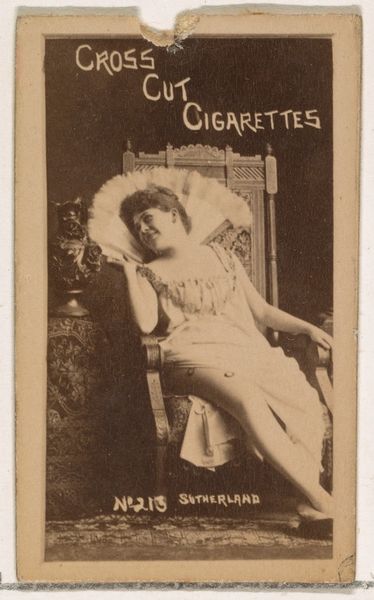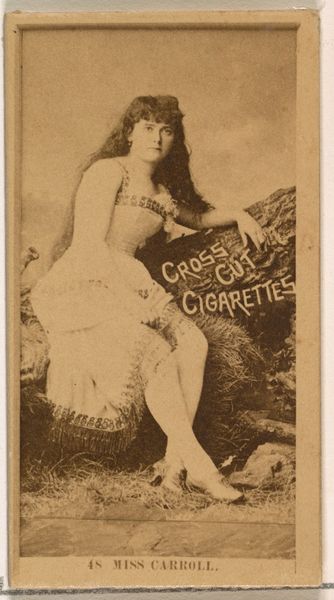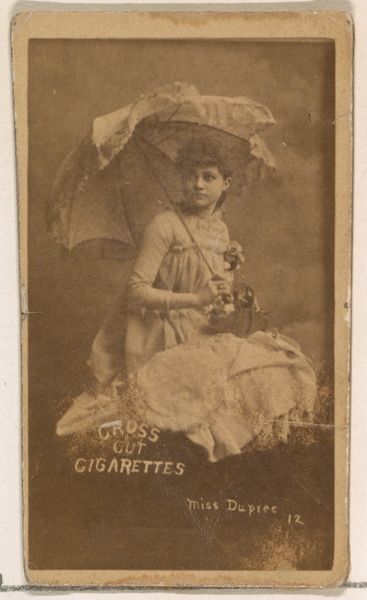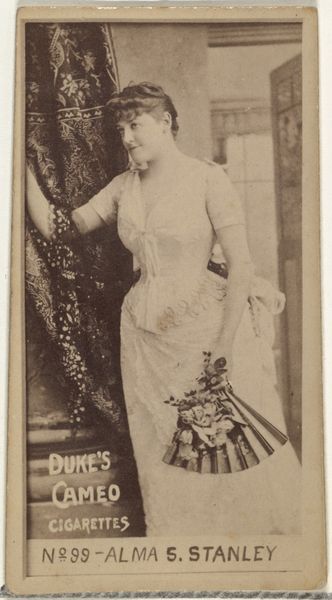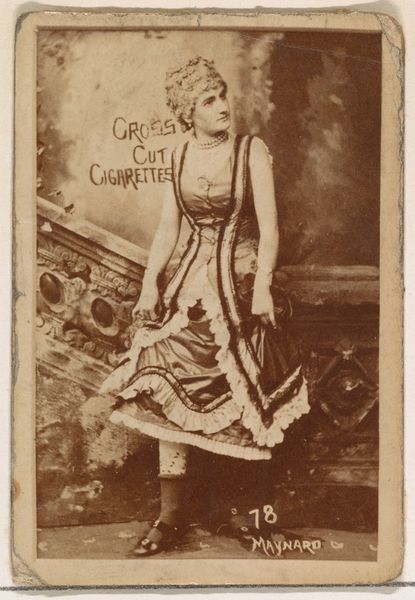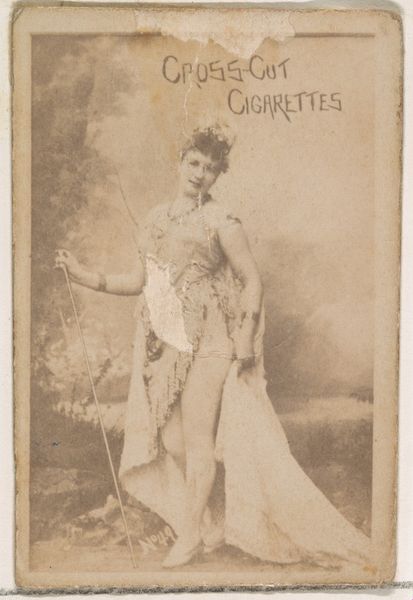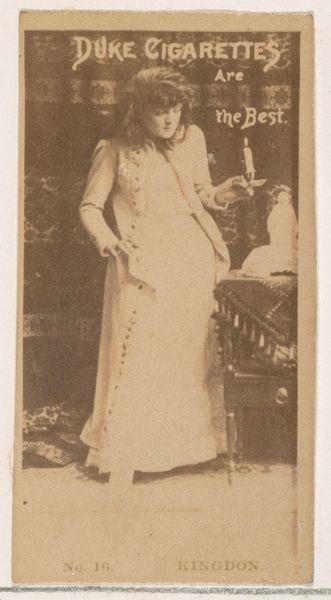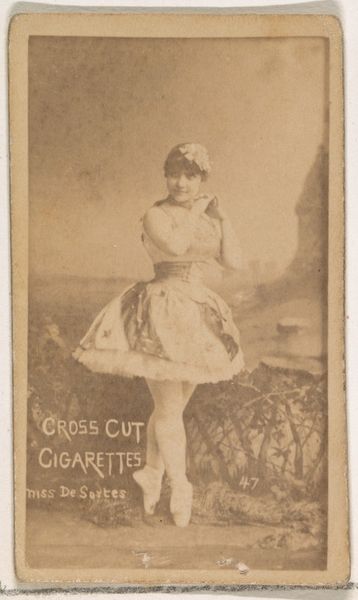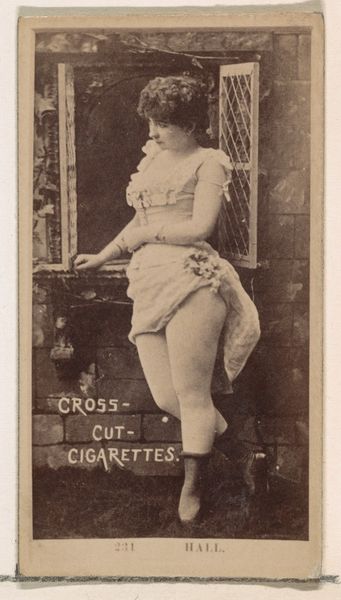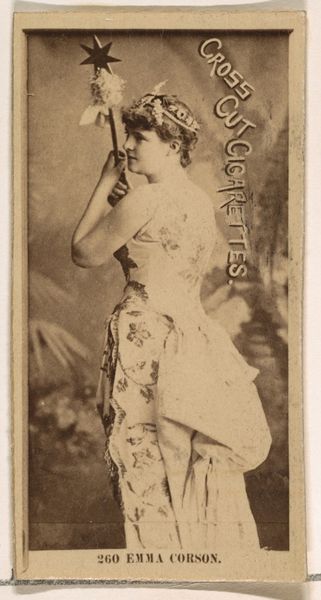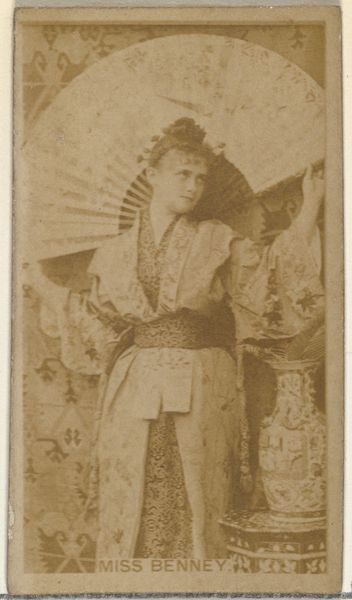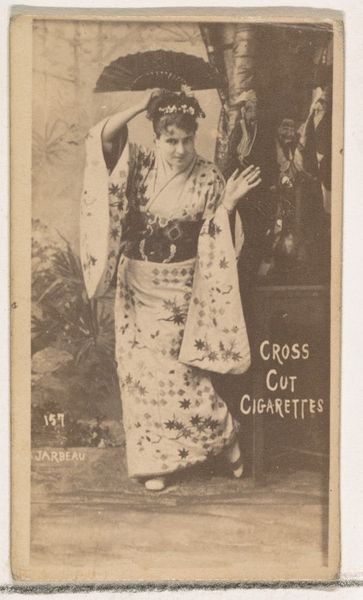
Card Number 220, Jarbeau, from the Actors and Actresses series (N145-1) issued by Duke Sons & Co. to promote Cross Cut Cigarettes 1880s
0:00
0:00
print, photography
#
portrait
# print
#
photography
#
japonisme
Dimensions: Sheet: 2 1/2 × 1 3/8 in. (6.4 × 3.5 cm)
Copyright: Public Domain
Curator: This is card number 220 in the Actors and Actresses series produced by Duke Sons & Co. in the 1880s to advertise Cross Cut Cigarettes. It's a photograph, showing the actress Jarbeau. The series itself leans heavily into the visual language of Japonisme that was quite fashionable at the time. Editor: There’s a pervasive melancholy to this image that really stands out. It feels like more than just an advertisement, like a veiled commentary on performance and identity itself. The sepia tone adds to that feeling, giving the actress and the setting this ghostly affect. Curator: The performance of identity is certainly part of the layered image. These cigarette cards often presented idealized versions of people or places through cultural filters. Here we see the fetishization of the "Orient," but it's worth noting that Jarbeau is in what appears to be a kimono on a set. Her posture is clearly Western, but framed with a Japanese aesthetic. Editor: Precisely. It really underlines the problematic exoticism that these depictions often rely on. What is considered an artistic, aesthetic embrace by some, to others embodies the perpetuation of stereotypes that flatten cultures and people, like an elaborate stage setting without acknowledging real people’s lives or lived reality. Curator: True, the flattened imagery does raise complex issues around cultural appropriation, especially the history behind Ukiyo-e prints. They were widely collected in the West, but here it's adapted for commercial purposes, a far cry from its origins as "pictures of the floating world". Editor: This is where it's critical to understand these images through a modern lens, because at the time, consumers in America might have admired the artistic tradition, and this sort of trade card would introduce the culture broadly. Today we’re much more attuned to recognizing its othering effects and cultural consequences in advertising practices. Curator: Ultimately, images like these allow us to question and explore how culture moves across time and context, which can unveil many contradictions. Even though it's an artifact of its era, it’s useful as a study in art, performance, and the business of cultural exchange. Editor: It’s important to acknowledge, yes, that these cards tell complicated stories. As a society we are increasingly fluent at recognizing embedded injustices of the past while acknowledging the beauty of historic moments through their imagery.
Comments
No comments
Be the first to comment and join the conversation on the ultimate creative platform.
